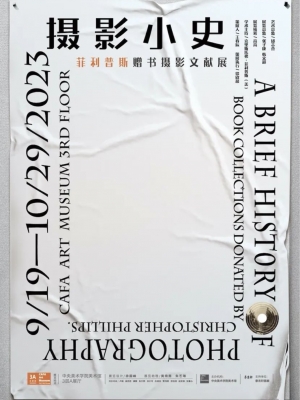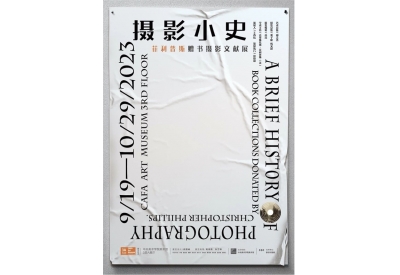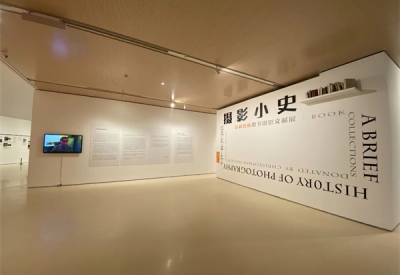
The first section. “Invention and Expansion”, describes the development of photography in the 19th century, focusing on its invention, technical development, and early applications. In 1826, Joseph Niepce took the first photograph using the Heliography method; and in 1835, William Talbot made the earliest surviving negative film. Eventually, on 19 August 1839, Daguerre disclosed the public details of the Daguerreotype, and the French government acquired the patent for the invention and gave the technology to the world on what has come to be known as the birthday of photography. Although the Daguerreotype was gradually replaced by more convenient techniques soon after its invention, this ancient technique is still used today by photographers such as Japanese photographer Takashi Arai.
This technology, which could automatically generate images depicting the real world, was seen by scholars and artists of the time as a threat to “true art”. In 1859, the poet Charles Baudelaire claimed that “If photography is allowed to have some of the functions of art, it will soon replace or destroy art completely”. The famous British art critic John Ruskin believed that photography was so focused on the appearance of rich details that it failed to express the individuality and soul of the artist, which is the core of art. During that period, photography reached the pinnacle of the pursuit of art – imitating nature –yet at the same time was considered to be incompatible with art.
The advent of photography allowed people in the 19th century to make realistic images of themselves more quickly in portrait studios, to access exotic landscapes without having to travel far, and to witness the process of human civilization’s exploration of natural science –photography corroborated and contributed to the modern way of viewing the world.
The second section, “Into the Modern Age”, covers a period of great change in the course of human history, including the two world wars that reshaped the global landscape, and photography documented these historical developments. Here, we split the same period into two lines, using white and grey walls to show the relationship between art and society and photography respectively.
The artistic development of photography began with the Photo-Secession, a group founded in 1902 by American photographers Alfred Stieglitz and Edward Steichen to promote photography as an art to the public. Photography could be found in some of the most familiar modernist art genres, and it opened up more possibilities for avant-garde forms of expression. For example, photodynamic photography provided an important source of visual strategy for futurist artists.
In the face of a rapidly changing social landscape, photography not only built a visual archive, but often carried profound social commentary. Eugene Atget, one of the pioneers of modern photography, was famous for his photographs of the urban landscape and architecture of Paris, capturing the changes and historical atmosphere of the city with a unique perspective. Robert Capa, known for his stunning war photographs, took risks to take iconic images including the Spanish Civil War and World War II, revealing the brutality of war in words that cut to the depths of humanity.
Not only did the emergence of photography bring unprecedented upheaval to the art world, but, as theorist Allan Sekula put it, photography was “more than an independent system of image-making; it was closely related to the larger pattern of global history.” Photography has changed the way we see the world, thanks to its easy reproduction and dissemination. As a visual means that transcends language, photography has helped to create direct and meaningful visual collective memories – whether through stereogram postcards, the press, or the internet.
The third section, “Divergence and Convergence”, takes the end of the Second World War as a starting point and focuses on the blossoming trend of postwar photography, in which a variety of “new” techniques and themes have emerged and flourished, and the social and artistic significance of photography has become more complex and diverse. In this section, the development of different themes in photography is illustrated by the most representative photographers and distinguished by different colors.
In the post-war world, documentary photography took on a new moral mission in people’s rethinking of war and colonization. The 1955 photography exhibition “The Family of Man” is one of the most important collections that express peace and humanism after the Second World War. The photographs presented in the exhibition have transcended the specific narratives of their original contexts and continue to represent common aspects of human experience today. With the emergence of postmodern thought, people began to question the implied presuppositions of Western art and to re-examine outsider art. Many female and non-Western artists began to pick up the camera and create their own “new images”.
As the last document shown in the timeline of the exhibition, the catalogue Between Past and Future: New Photography and Video from China raises the possibility of developing China’s own photographic history. Photography arrived in China soon after its invention, but in the so-called “orthodox” history of photography, there were very few Chinese photographers. This book is presented at the end of the exhibition, but it is also the beginning of the consciousness of writing a history of Chinese photography.
Louis Jacques Mand Daguerre used heavy and expensive equipment, Henri Cartier-Bresson carried a camera to capture the vicissitudes of life on the streets, and Alfred Stieglitz moved from naturalistic photography that opposed artificial manipulation of photographs to the attempt to give artistry into photography. China as Seen by Photographers & Travelers, 1860-1912 is a catalogue that presents the mysterious East by using documentary photography, and Between Past and Future: New Photography and Video from China is an exhibition that traces the development of Chinese photography. In 1839 when photography was invented, painter Paul Delaroche exclaimed that painting is dead, and in 1992, William Mitchell claimed that photography is dead in the digital age. These artists and scholars have been constantly looking critically at the past of photography and outlining the future of photography with forward-looking expressions.
We hope that this exhibition of the donated collection will provide a brief introduction to the two-century history of photography. More importantly, this exhibition does not merely aim to tell the viewer a given version of history. In the context of post-colonial cultural reflection, we hope that this exhibition can bring an end to the total and uncritical acceptance of Western-dominated art history. Therefore, we leave an open ending to narrate and inspire rather than to define. Admittedly, due to space constraints, the literature in the exhibition is not enough to cover all the important moments in the history of photography; but it offers viewers a way to visualize the history of photography and illustrate a method to trace the threads of visual culture.
Text by Huang Nanyan

2023-09-18

2023-10-28

